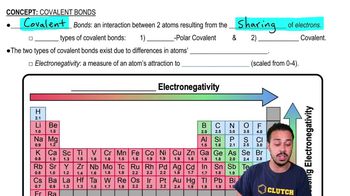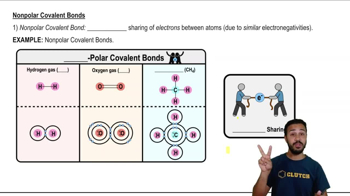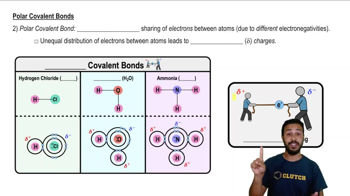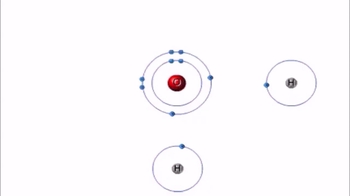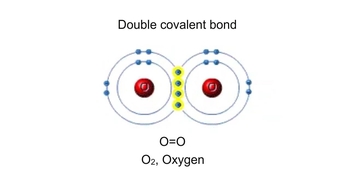2. Cell Chemistry & Cell Components
Covalent Bonds
2. Cell Chemistry & Cell Components
Covalent Bonds
Additional 4 creators.
Learn with other creators
Showing 7 of 7 videos
Practice this topic
- Multiple Choice
When two atoms share a pair of electrons, the bonding is referred to as:
a) Ionic.
b) Covalent.
c) Unstable.
d) Hydrogen.
e) Polar.
- Multiple Choice
What makes a covalent bond nonpolar?
a) The bonded atoms share electrons unequally.
b) The bonded atoms share electrons equally.
c) The bonded atoms have equal electronegativities.
d) The bonded atoms have unequal electronegativities.
e) a and d only.
f) b and c only.
- Multiple Choice
If a covalent bond is polar:
a) Electrons are not shared by atoms.
b) Protons are shared by atoms.
c) The bond is not important to living cells.
d) One of the atoms has a partial negative charge.
e) The bond is not a strong bond.
- Multiple Choice
Bonds between two atoms that are equally or similarly electronegative are ________.
- Open QuestionWhich of the following occurs when a covalent bond forms?a. Electrons in valence shells are transferred from one atom to another.b. Electrons in valence shells are shared between atoms.c. Partial charges on polar molecules interact.d. Nonpolar molecules are pushed together.by surrounding water molecules.
- Open QuestionWhich of these molecules would you predict to have the largest number of polar covalent bonds based on their molecular formulas?a. C2H6O(ethanol)b. C2H6(ethane)c. C2H4O2(aceticacid)d. C3H8O (propanol)
- Open QuestionWhich of these molecules would you predict to have the largest number of polar covalent bonds based on their molecular formulas?a. C2H6O(ethanol)b. C2H6(ethane)c. C2H4O2(aceticacid)d. C3H8O (propanol)
- Open QuestionThe atomic number of sulfur is 16. Sulfur combines with hydrogen by covalent bonding to form a compound, hydrogen sulfide. Based on the number of valence electrons in a sulfur atom, predict the molecular formula of the compound.a. HSb. HS2c. H2Sd. H4S
